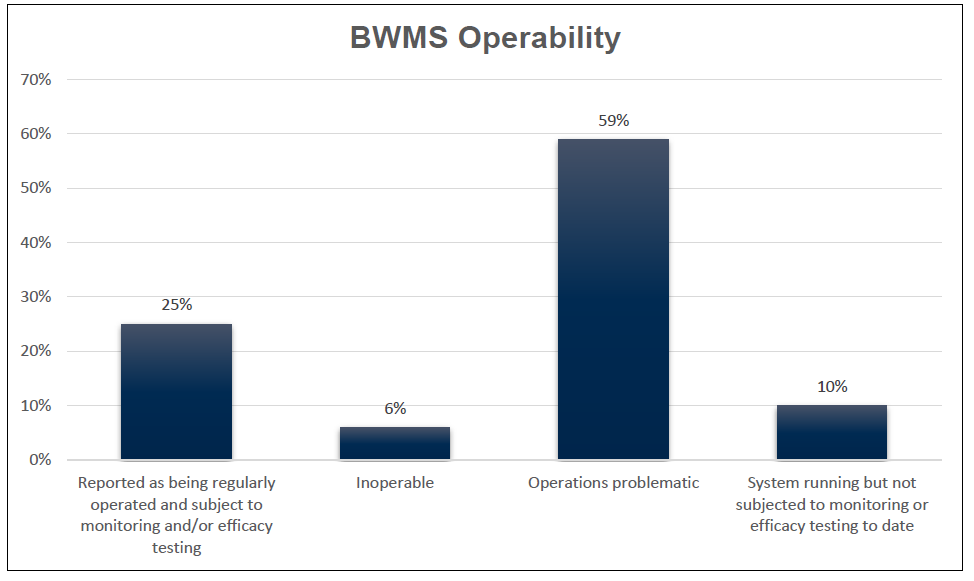New Report Details Ballast Water Systems' Operating Challenges
ABS has released a detailed report on a worldwide shipowner workshop series on ballast water treatment systems. Anecdotal reports of BWTS challenges have circulated for some time, but the report provides detailed insight from shipowners about the specific nature of these issues - and the best ways to address them.
To form a better picture of the industry's progress on BWM compliance, ABS held workshops in New Orleans, Shanghai, Hong Kong, Singapore and Athens, reaching more than 60 shipowners and operators and about 500 vessels. Workshop attendees reviewed best practices for BWM adoption, exploring challenges with picking the right system, keeping up with maintenance requirements and planning for system breakdown contingencies.
Participants also took a survey about their experience to date, and the results indicate that most operators are encountering some degree of difficulty with their BWTS. Nearly 60 percent reported that their BWTS operations were problematic, rising to more than 90 percent for two particular treatment technology types.

Courtesy ABS
Results varied between technology types, but in general, the most concerning problems that participants cited included: challenges with matching the right system to the right application; low equipment reliability; difficulty in getting rapid on-site service and spare parts in the event of a breakdown; control system software faults; and system limitations due to turbidity or freshwater operating locations (for EC-type systems). Participants also pointed to a need to develop ship-specific BWMS training and procedures, along with crew competency assessments.
“With the increased number of owners experiencing problematic operations due to system design limitations, we expanded our focus to cover practical contingency measures," said William Burroughs, ABS Ballast Water Management Lead. ABS distilled these best-practice takeaways into four main points:
- Incorporating ship-specific contingency measures within the BWM Plan, including action plans for the crew in the event of a BWMS failure, will help avoid downtime and financial penalties;
- System-specific training, both for shoreside support and vessel crew, is critical for effectively operating and maintaining a BWM system;
- Monitoring key data and operational trends and understanding system design limitations helps crew determine the suitability of the treatment technology for a vessel’s planned operational routes;

that matters most
Get the latest maritime news delivered to your inbox daily.
- and providing after-sales global vendor support and expertise is critically important for uninterrupted BWM system operation.
The full report gives 172 pages of precise detail about the challenges and benefits of each treatment methodology, broken down by type, and it is available here.
